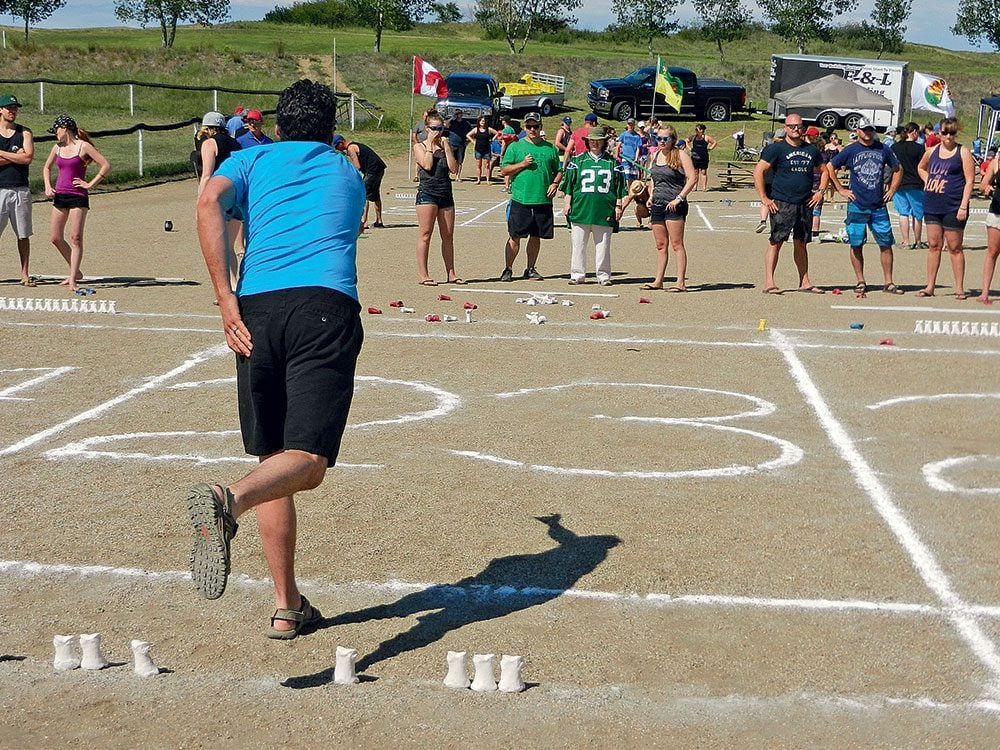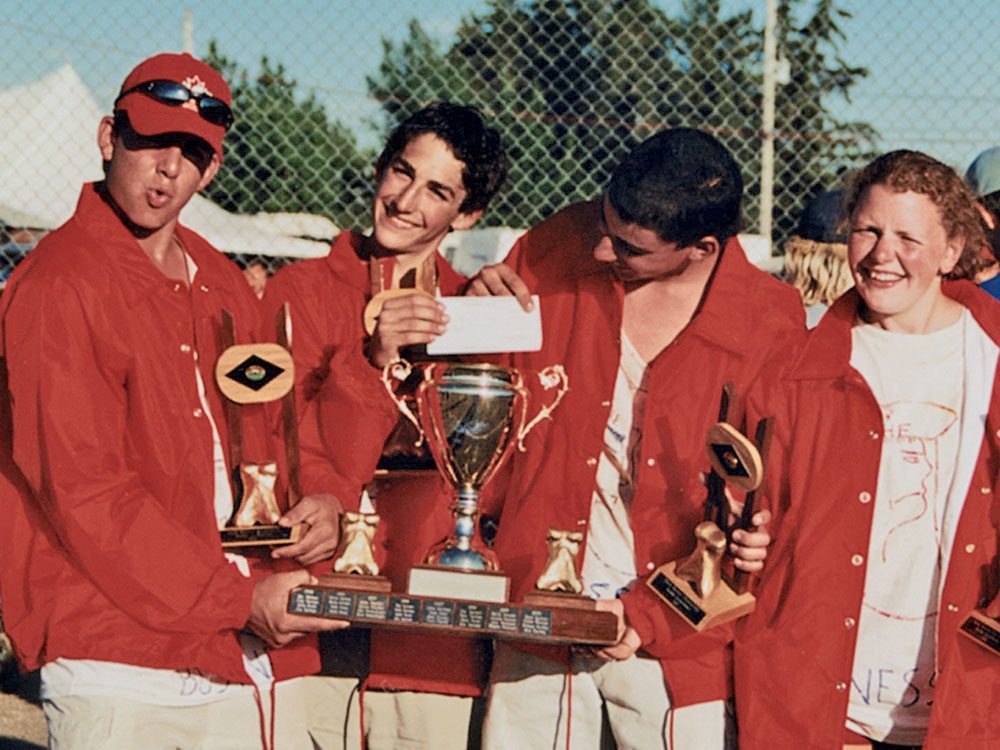
What is Bunnock, anyway?
I am a writer, a blogger, and a proud mom of three, but perhaps, most interestingly, I am a world champion. I wouldn’t call myself famous, as you will not find my competitive endeavours televised on any major network, nor have I landed any profitable endorsement deals to date. I am sure, however, that any of the good folks living in and around the small town of Macklin, Saskatchewan, would be happy to fill in the blanks of my—our—extraordinary story.
It begins in 1993, when the Chamber of Commerce in this west-central Saskatchewan town put their heads and hands together to conceive of and host the first-ever World Bunnock Championship… but what’s Bunnock? Nobody’s ever heard of Bunnock, you say?
Well, the hundreds of teams who take part in the annual championship tournament would beg to differ. Any one of these people will tell you that Bunnock is a proud and long-standing tradition in the town of Macklin. They will explain that Bunnock is a game, comparable to horseshoes, in which opposing teams compete to knock over each other’s line of horse-ankle bones, spaced 10 metres apart, by lobbing—you guessed it—more horse-ankle bones at them! And if you ask why, they will tell you the story of the 19th-century German-Russian ancestors of the pioneer folk of Macklin who, to pass the time on the frozen Siberian landscape, took to throwing about horse-ankle bones.
This informal game was handed down to subsequent generations and eventually found a new home as a real-deal world championship competition in Macklin. They might also share with you some of the names of Bunnock legends, such as Mel Gartner, Chelsey Doetzel or Troy Baier who manage to dominate the tournament year after year. And maybe, just maybe, they will share a fleeting memory of my team—the youngest ever to win the tournament, joining their ranks as World Bunnock Champions in 2001.

Winning the World Bunnock Championships
Over the years, I’ve been asked how my team, composed of myself, then just 20 years of age, and three younger cousins (above), managed to pull off a victory of such “osseous” proportions. Well, the truthful answer is that it took a healthy dose of practice and a dollop of Viel Glück (German for good luck)!
The four of us, like many around Macklin, grew up playing “bones” in back alleys, on family farms, at weddings, family reunions and community events. We played with our grandparents, parents, neighbours, cousins and friends, and, no doubt, every one of us threw our first bone (albeit at an altered, shorter distance) before the age of five. Gradually, I suppose, one’s aim improves and some players hone a specific throwing technique, but even the most seasoned vets will tell you that bones is as much a mind game as anything else.
They will also tell you that some days success is effortless—that they know the second the “thrower” leaves their hand that it is going to make a connection on the other end. Other days, they can’t hit a bone to save their lives. Of course, there is always the added element of luck! An unfortunately placed stone on the court, for example, can alter a throw bound for bone-shattering glory or a sandy spot can stop a thrower dead in its tracks. These added random elements keep Bunnock players and fans on their toes, and undoubtedly contributed in some part to our success on August 5, 2001.
Let it be known that you don’t have to be a world-class athlete to enjoy the next World Bunnock Championship, scheduled for July 29-31, 2022. This spectacle holds appeal for people of every age, and you won’t regret coming to Macklin to discover its charms for yourself! With players and spectators ranging in age from 5 to 85, the town swelling to more than double its size, and a spirit of volunteerism that has to be seen to be believed, you will not leave Macklin disappointed. You will be forever touched by the best this community has to offer, and you will experience for yourself the magic that draws people back to the World Bunnock Championship year after year.
Discover more hidden gems across Canada.

Bunnock For Beginners: How to play Bunnock
Bunnock is a fun game that can be played by two to eight players. Two rows of 22 bones (one row per team) are set up ten metres apart. Each row of bones has one “guard” at each end, set 40 centimetres apart from the other bones in the row, known as “soldiers.” The object of the game is to knock the opposing team’s line of bones down before they knock yours down. Each team player uses two “throwers” in turn to try to hit the opposing team’s line down, beginning with the guards and moving on to the soldiers. During the tournament, the winner of a coin toss can choose which side their team would like to throw from or whether or not they would like to throw first. Click here for complete rules!
Looking for another reason to swing by Macklin, Saskatchewan? The town’s claim to fame—the World’s Largest Bunnock (above)—provides an irresistible photo opp! Check out more of Canada’s biggest roadside attractions.